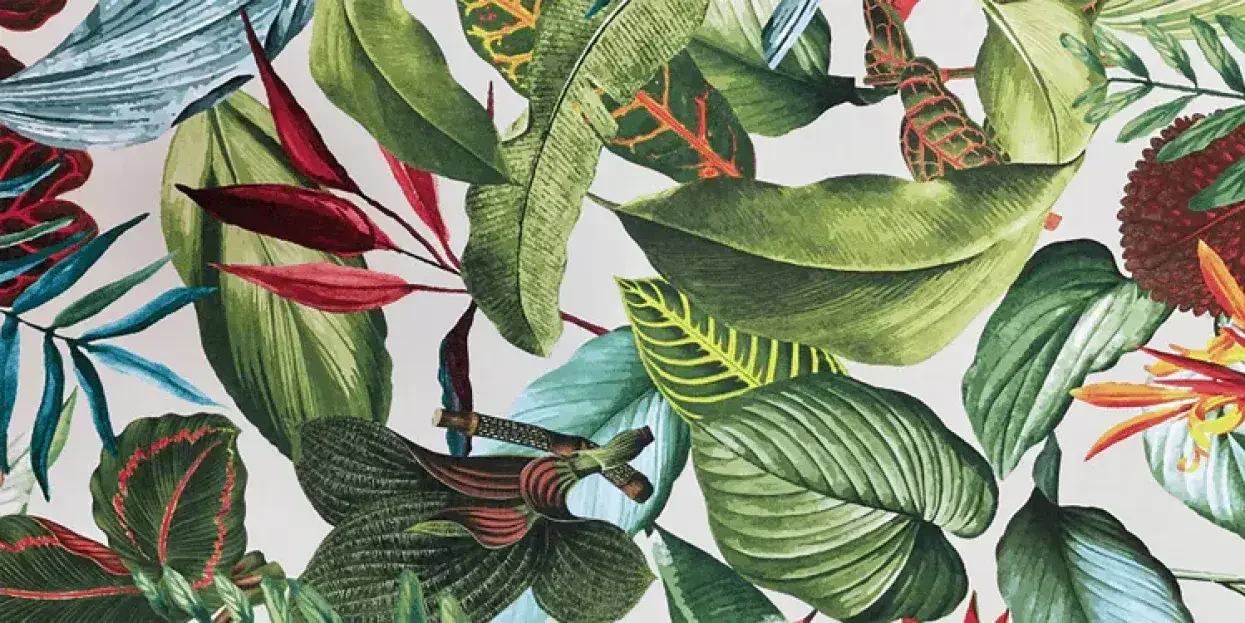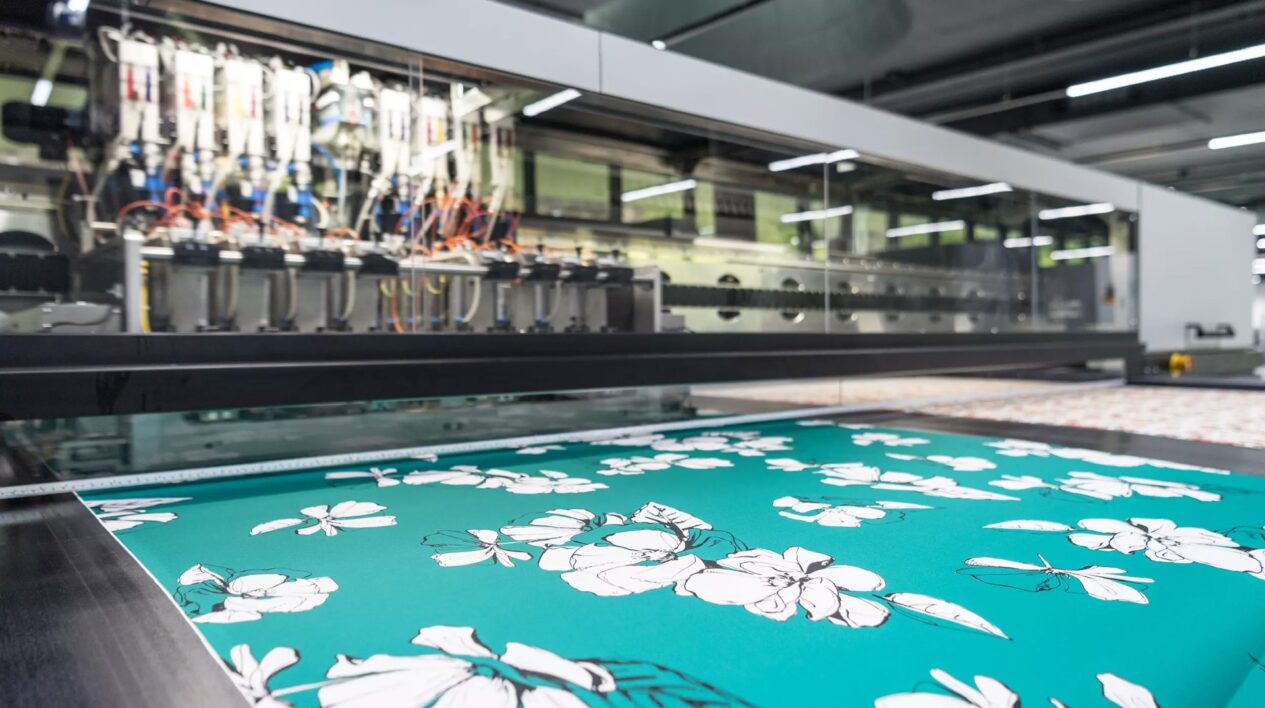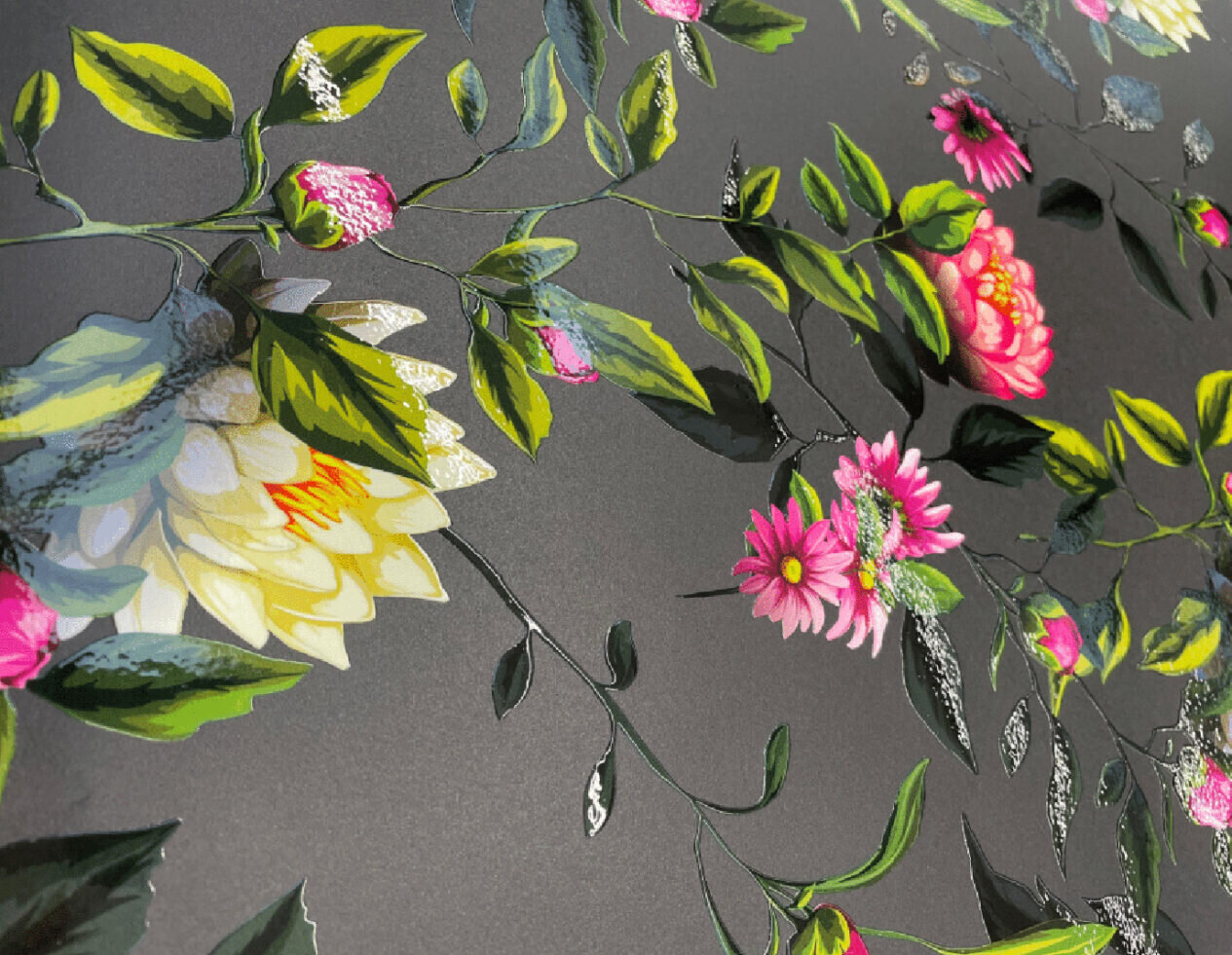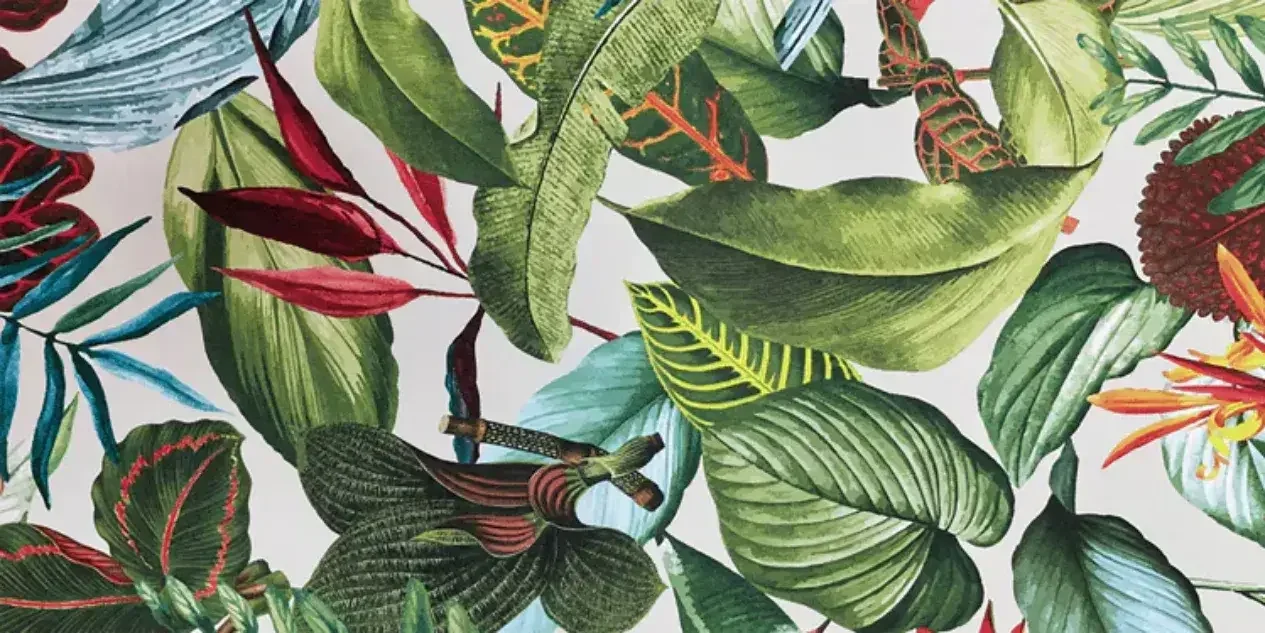
Debbie McKeegan discusses the latest trends in the wall coverings industry and how it has evolved with the help of digital printing technologies.
The wallcovering industry has been evolving for many years, after a difficult start to the 21st century – wallpaper is definitely back in vogue. Digital printing technologies have already made a significant impact and were one of the first product lines to switch to digital production for new applications in the early 00’s using technology initially developed for the graphics industry.
I’m sure we all remember, and some may still cherish their super photographic digitally produced photo murals, which were produced in their millions and many still are to this day for home and office interiors alike. The New York skyline has been replicated millions of times on millions of walls worldwide as have tropical scenes, sunsets and alpine vistas.
The statement wall mural remains an important element of Interior décor (although design and style have significantly improved) and feature walls also continue to offer the consumer an affordable option, using less paper when supported by plain painted walls.
Wallpaper murals have evolved over the last 20 years with many luxurious materials and artisan offerings now available. Here too digital technologies have played a major role to enable customisation of both imagery, materials and product scale. Residential interiors and the Hospitality sector have embraced this creativity in making the wall space a key component of an Interior scheme with dramatic commercial success. The sector is supplied with a plethora of designer offerings and supported by a worldwide network for wallpaper production offered via ecommerce, and on-demand print facilities.
However, for the Interior Décor manufacturing community, roll-to-roll wallpaper is a different product – in the main – wallcoverings are tactile and create ambience and atmosphere rather than photographic drama. They possess a high design aesthetic and are easy to live with and in general, support the main event – the interior furnishings. Roll-to-roll wallcoverings are readily available to all consumers (regardless of budget) and remain the main, mass manufactured product for the sector.
Wallpaper may provide a stylish backdrop, a splash of pattern or set the tone for an interior scheme, only becoming a readily available decorative product in the late 19th century and was used as a decor element by the affluent, as a symbol of wealth and prosperity. In earlier iterations, textiles were often used as a wallcovering surface, and still are today, holding their premier position as a luxury item.
William Morris is perhaps the most iconic designer to be attributed to the mass production of wallcoverings (and textiles) his early papers were block printed and again, luxury wallcoverings are still manufactured using this method, maintaining a premium price-point.
Digital technologies are now set to make an equally significant contribution to wallcovering production. Back to the main event – Mass manufacture on an industrial scale for roll-to roll wallcoverings.
Conventional wallcoverings are manufactured at high speed, hence their affordable price-pointing. Non-woven wallcoverings and vinyl’s of various gsm weights are the substrates of preference. Producing many 1000’s of rolls per day is standard practice for all wallcoverings manufacturers using flexographic or gravure rollers and industrial scale print machinery.
It is in this high-volume sector of the wallcoverings industry that digital printing machinery now offers industrial scale, transformative manufacturing technology capable of disrupting the status quo and will mark a significant timestamp for the industry to now digitise the supply chain and move to refit the wallcovering industry.
There are many key advantages to be attained. Speed, sustainable, flexible production and manufacturing efficiency, on-demand stock and most recently energy, effluent and waste reduction. All valuable components of wallcovering production for the decades ahead.
Digital technologies are now set to make an equally significant contribution to production for mass manufactured Roll-to roll Wallcoverings.
Image Credit: Durst ALPHA WALLPAPER EDITION

What can currently be achieved?
The Durst Alpha series, prints using eco-certified pigment inks and is capable of manufacturing an average output of 1500 (10m) rolls per day. Also available from Durst is the P5 UV-LED series, which offers a creative suite of printable surface effects using white ink and varnish alongside high speed, efficient output.
Wallpaper and murals have evolved over the last 20 years with many luxurious mat, creative offerings now available. Here too digital technologies have played a major role to enable customisation of both imagery, materials and product scale.
Image Credit: Durst

Durst invited over 70 wallpaper manufacturing VIP’s to their Brixen HQ in Italy to explore the latest technology for wallcovering production. Martin Winkler commented: “We had a great response to our wallpaper open house here in Brixen, Italy. The wallpaper industry is having a difficult time at the moment and so, commercial challenges are pushing them harder towards a digital solution.”
Graham & Brown’s digital journey ran in parallel with its e-commerce proposition to create unique wallpaper, more flexibility and reduce its warehouse stock by becoming more of a print-on-demand brand to meet evolving customer demands.
Image Credit: Durst

What’s driving the digitisation of the wallcoverings industry?
“Definitely energy costs in conventional is very, very high. Digital allows us to reduce this waste and energy costs dramatically. We have developed printers, which are able to produce up to 1500 rolls a day digitally and here we now fulfil a critical request of the industry. But what is also important is not only our fine Alpha wallpaper printing technologies – we also offer the P5 UV-LED inks technology, with the GREENGUARD gold standard. We have a lot of new business models popping up with those new machines into this market. By using the ink with varnish with white under and with special effects and also their wide format application offering from 50cm width up to 3.3m” Martin explained further.
Aaron Kirsch is President at Astek Wallcovering Inc., based in Los Angeles, California and has been a Durst technology supporter since 2006. “We just recently took possession of the new P5 HS series and love it – we’re looking forward to the next progression. Wallcovering for us has never been on a decline. It’s always been on an uptick. We’ve had opportunities to buy other printers, but Durst is our favourite – they’re workhorses. High quality print supporting good design. Good print will always sell”.
Here in the UK, one of the UK’s largest wallcoverings manufacturers Graham and Brown recently added a new production line using Durst’s Alpha digital technology “Investing in more “absolute game-changing” Alpha Wallpaper Edition technology from Durst in what has become the central pillar in our international wallpaper brand’s drive to total carbon neutral production” they commented. “The potential is enormous,” said Sam Dobson, Operations Director for Graham & Brown, of Blackburn, Lancashire, UK. “Digital is an extremely important technology for the wallpaper industry. It’s really about print-on-demand, reducing print run-lengths and giving a more bespoke offering to customers. At the moment, this industrial-scale digital production has filled the gap between high run lengths of conventional printing and the low volumes on our previous digital machines.”
“We see the Durst as a complementary technology that has many environmental and other benefits. As one example, the main resource we need to power the machine is electricity, and all of that is renewable. For the last year all of our digital production – representing 35% of the Graham & Brown brand offer – has been carbon zero.”
Graham & Brown’s digital journey ran in parallel with its e-commerce proposition to create unique wallpaper, more flexibility and reduce its warehouse stock by becoming more of a print-on-demand brand to meet evolving customer demands. The installation of the first Durst Alpha Wallpaper Edition production printer in January 2022 was so successful that a second machine was installed a year later.
Martin Winkler, Durst Group wallpaper specialist and Business Development Manager, Textiles, said: “The move to digital production in the wallpaper industry is accelerating as buying habits change. We are proud to have partnered with Graham & Brown as it expands digital printing volumes to provide carbon neutral production, which only digital can deliver. The installation of a second Durst Alpha Wallpaper Edition is underpins our belief that wallpaper has since ceased to be just a ‘renovation object’ and has now become a lifestyle product with which customers express their individuality and create a feel-good atmosphere.”
As the digitisation of the wallcoverings industry continues to gain pace, we look forward to the future advancement of digital production technologies, market growth and the creative and environmental benefits these technologies will no doubt achieve.